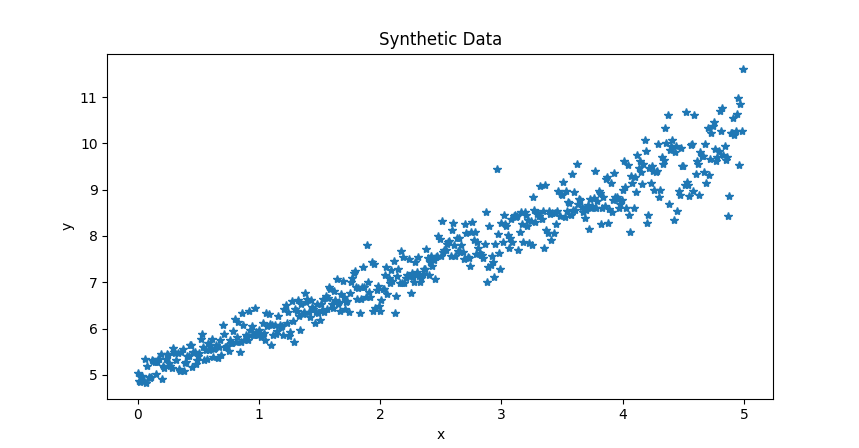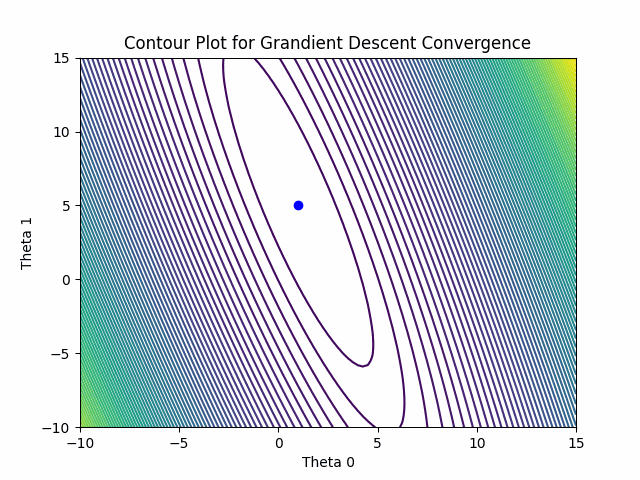Gradient Descent

Introduction
Gradient descent is a fundamental optimization algorithm widely used in machine learning and optimization problems. It is employed to minimize a function by iteratively moving in the direction of the steepest descent as indicated by the negative of the gradient. This article aims to explain the concepts behind gradient descent and its implementation in python.
Before diving into gradient descent, it’s crucial to understand the notion of optimization. In optimization, the goal is to find the minimum or maximum of a function. For simplicity, let’s focus on minimizing a function, typically denoted as $ f(x) $, where $ x $ represents the parameters of the function. The process of finding the minimum of $ f(x) $ involves iterative steps towards adjusting the parameters $ x $ until reaching a minimum.
The Gradient
The gradient of a function, denoted as $ \nabla f(x) $, is a vector that points in the direction of the steepest increase of the function at a particular point. In other words, it indicates the direction in which the function grows fastest. The negative gradient, $ -\nabla f(x) $, points in the direction of the steepest decrease, which is the direction of the greatest decrease of the function.
Gradient Descent Algorithm
Gradient descent operates by iteratively updating the parameters $ x $ in the opposite direction of the gradient of the function $ f(x) $ with respect to $ x $. The update rule for gradient descent can be represented as:
$$ x_{t+1} = x_t - \alpha \nabla f(x_t) $$
where:
- $ x_t $ represents the parameters at iteration $ t $.
- $ \alpha $ (alpha) denotes the learning rate, which controls the step size or the rate at which the parameters are updated.
The learning rate is a critical hyperparameter in gradient descent. A too small learning rate may result in slow convergence, while a too large learning rate can cause divergence, where the optimization process fails to converge to a minimum.
Implementation
Initially a synthetic data is generated via the function randomDataGenerator. Using np.arange(), an array of x values ranging from 0 to 5 with a step size of 0.01 is created. Then, the slope and bias value are sampled from a normal distribution of mean 1 and 5 respectively. Later, y values for each x value using the equation of a straight line: $ y = \theta _{0} * x + \theta _{1} $.
def randomDataGenerator():
"""
:param theta0: slope
:param theta1: bias
:return: data x,y
"""
x = np.arange(start=0, stop=5, step=0.01)
n_rnd = 500
theta0 = np.random.normal(loc=1, scale=0.1, size=n_rnd)
theta1 = np.random.normal(loc=5, scale=0.2, size=n_rnd)
y = theta0_init * x + theta1_init
return x , y, theta0_init, theta1_init

Linear Regression Cost Function
Once the data is generated, A cost function for linear regression is defined to apply gradient descent, often termed the Mean Squared Error (MSE), quantifies the model’s performance by calculating the average of the squared differences between predicted and actual values across all training examples.
The formula for the MSE cost function is as follows:
$$ \tag{1} J(\theta) = \frac{1}{m} \sum_{i=1}^{m} (h_{\theta}(x_{i}) - y_{i})^{2} $$
Here,
- $ J(\theta) $ is the cost function.
- $ m $ is the number of training examples.
- $ h_{\theta}(x_{i}) $ represents the predicted value of the i-th example using parameters $ \theta $.
- $ y_{i} $ is the actual value of the i-th example.
The parameters are the coefficients (slope and intercept) of the linear equation. To perform gradient descent, we need the partial derivatives of the cost function with respect to each parameter. These derivatives indicate the direction and magnitude of the parameter update that will decrease the cost [1].
Partial derivative with respect to the intercept $ \theta_{0} $:
$$ \tag{2} \frac{\partial}{\partial \theta _{0}} J (\theta) = \frac{2}{m} \sum _{i=1}^{m} (h _{\theta}(x _{i}) - y _{i})$$
Partial derivative with respect to the slope $ \theta_{1} $:
$$ \tag{3} \frac{\partial }{\partial \theta _{1}} J (\theta) = \frac {2}{m} \sum _{i=1}^{m} ( h _{\theta}(x _{i}) - y _{i} ) \cdot x _{i} $$
These equations show how much the cost function will change if we change each parameter slightly. The hypothesis used to create the synthetic data can be denoted as $ H( \theta) $. To obtain the model parameters, we employ gradient descent by taking the derivative of the function with respect to the parameters. The following function implements the gradient descent algorithm. At each iteration, the parameters are updated by subtracting the derivative multiplied by the learning rate $ \alpha $. Convergence of the algorithm is determined by a threshold, which measures the change in parameter values between two consecutive iterations."
def hypothesis(x, theta0, theta1):
return theta0*x + theta1
def gradientDescent(m,c,x,y):
all_m = []
all_c = []
i = 1
threshold = 999999
while threshold > 10e-20:
d_m = (np.sum((hypothesis(x,m,c) - y ) * x)) * (2/len(x))
d_c = (np.sum(hypothesis(x,m,c) - y )) * (2/len(x))
old_m = m
all_m.append(m)
all_c.append(c)
m = m - 0.01 * d_m
c = c - 0.01 * d_c
threshold = abs(old_m - m)
i = i +1
print(m,c, threshold)
return all_m, all_c
The values of the slope and the bias are stored in a variable, that is later used for visualization. The code below uses all the function defined above to create and fit a linea regression model using gradient descent algroithm
dataX, dataY, theta0_init, theta1_init = randomDataGenerator()
theta0_grid = np.linspace(-10, 15, 101)
theta1_grid = np.linspace(-10, 15, 101)
Z = cost_func_3d(theta0_grid[np.newaxis, :, np.newaxis],
theta1_grid[:, np.newaxis, np.newaxis],
dataX,dataY)
X, Y = np.meshgrid(theta0_grid, theta1_grid)
all_m, all_c = gradientDescent(m=-10, c=10, x=dataX, y=dataY)
fig = plt.figure()
ax = plt.axes()
ax.contour(X, Y, Z, 100)
plt.title('Contour Plot for Grandient Descent Convergence')
plt.xlabel('Theta 0')
plt.ylabel('Theta 1')
plt.scatter(0.9992458979704978, 5.015957571468284, color='blue')
line, = ax.plot([], [],'r-', lw=2)
annotation = ax.text(-1, 700000, '')
annotation.set_animated(True)
anim = animation.FuncAnimation(fig, animate, init_func=init, frames=2000, interval=1, blit=True)
writer = animation.PillowWriter(fps=30,metadata=dict(artist='Me'),bitrate=1800)
anim.save('contour.gif', writer=writer)
plt.show()
The converge of the algorithm for the synthetic data can be seen in below Figure

The convergence of the model parameters could be visualized using contour plot as show below

Conclusion
Gradient descent is a powerful optimization algorithm used to minimize functions iteratively by moving in the direction of the steepest descent. Understanding gradient descent and its variants is essential for practitioners in machine learning and optimization fields, as it underpins many modern optimization techniques and algorithms. With proper tuning of hyperparameters and careful consideration of the problem domain, gradient descent can efficiently solve a wide range of optimization problems. Python implementation of the code can be found here github